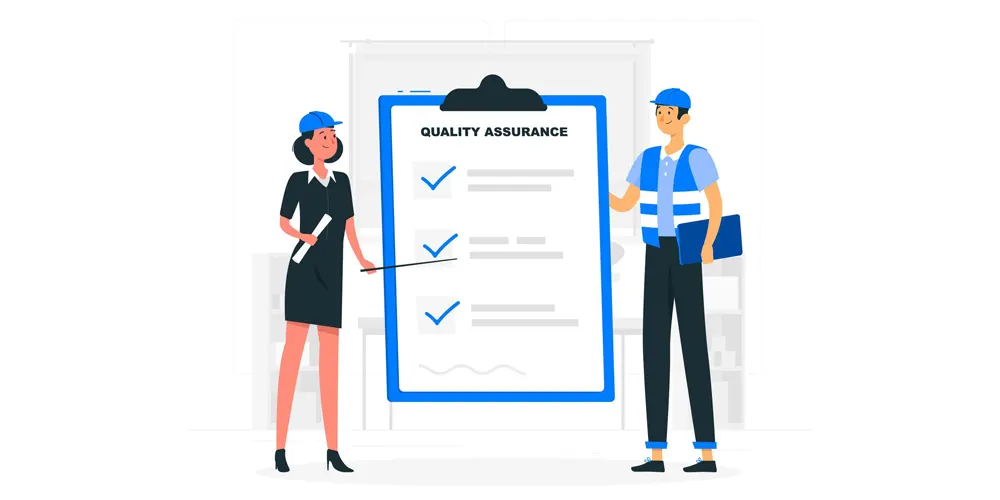Understanding the Crucial Role of Session Border Controllers in Carrier-Grade VoIP Networks
Carrier-grade Networks are the behemoths of the telecommunication world. These large networks connect a huge user base to other networks. Thus ensuring anyone can connect with anyone seamlessly all around the world.
These networks are not just big but complex in terms of all the components that work together to enable reliable communication. One important component in this network happens to be the Session Border Controller.
We’ve already checked the different roles played by a Session Border Controller in a telecom network. While it may play the same roles in a carrier-grade network, the way things are done here is completely different.
So if you’ve always wondered how carrier-grade networks work, this article will help you understand a lot of its ins and outs.
Let’s get started with some basics then, shall we?
The Basics of Session Border Controllers

Session Border Controllers, commonly known as SBCs, are critical devices in VoIP and Unified Communications (UC) networks. Their primary function is to serve as gatekeepers or intermediaries for real-time communication sessions. SBCs sit at the edge of these networks, acting as the guardians of secure and efficient communication.
Key Features and Functionalities
SBCs offer a range of essential features and functionalities, including:
- Security - SBCs provide a robust security layer, protecting against cyber threats like DDoS attacks and unauthorized access. They act as firewalls, monitoring and filtering incoming and outgoing traffic to ensure the integrity of communication.
- Interoperability - SBCs excel at protocol translation, making different VoIP devices and networks compatible. They facilitate seamless communication between various platforms, ensuring that different systems can understand each other's language.
- Quality of Service (QoS) - SBCs optimize traffic flow, managing bandwidth efficiently to maintain high call quality. They prevent congestion, jitter, and packet loss, ensuring smooth communication.
- Call Routing - SBCs intelligently route calls, determining the most efficient path for voice and video traffic. This ensures that calls reach their destinations reliably and quickly.
All in all, Session Border Controllers are essential components of VoIP and UC networks. They provide security, interoperability, and QoS management.
They play a pivotal role in safeguarding communication while facilitating efficient connections between various systems and devices.
Now that you’re well versed in the basics, we can delve into the different roles an SBC plays in Carrier-grade Networks.
1. VoIP Network Scalability

Carrier-grade VoIP networks face several challenges when it comes to scalability. These include accommodating a growing number of users and devices, handling increasing call volumes during peak times, and ensuring consistent call quality and reliability.
As the network expands, congestion and bottlenecks can become a recurring problem. This would lead to dropped calls and degraded service quality.
How do SBCs Address Scalability Issues?
SBCs are instrumental in addressing scalability challenges. They act as intelligent gateways, efficiently managing and distributing traffic across the network. They support the growth of carrier-grade VoIP networks by providing:
- Elastic Scaling - SBCs can scale horizontally to handle increased traffic loads. As more users and devices are added to the network, SBCs dynamically allocate resources to ensure optimal performance.
- Load Balancing - SBCs balance incoming traffic across multiple servers and paths. Thus preventing congestion and optimizing resource utilization. This ensures that no single server becomes overwhelmed, enhancing network stability.
Load balancing and traffic management with SBCs
SBCs analyze call traffic in real time and intelligently route calls to the most available and efficient paths. During peak usage, SBCs distribute calls evenly, preventing network congestion and maintaining call quality.
Additionally, SBCs can prioritize and optimize voice and video traffic, ensuring that real-time communication receives top-notch service.
They dynamically adjust call routing based on network conditions, ensuring that calls continue to flow smoothly even as the network scales. Thus evidently, SBCs are key enablers of scalability in carrier-grade VoIP networks.
2. Security and Fraud Prevention

The scale of operations is quite large when it comes to carrier-grade networks. There are thousands of calls being placed at any given moment and a lot of sensitive information being exchanged. Thus, securing the network is imperative.
The Evolving Threat Landscape in VoIP
The VoIP landscape faces a continuously evolving threat environment. Hackers and fraudsters seek to exploit vulnerabilities in the network. Most bad actors attempt activities such as toll fraud, eavesdropping, and denial-of-service (DoS) attacks.
As VoIP technology advances, so do the tactics used by malicious actors, making security paramount.
SBCs as the First Line of Defense
Carrier-grade SBCs are the frontline guardians against these threats. They act as a digital moat, sitting at the network's edge. Their role is multifaceted:
- Access Control - SBCs authenticate and authorize users, devices, and calls, ensuring that only legitimate traffic enters the network.
- Security Policies - They enforce security policies, monitoring and blocking suspicious activities, such as multiple login attempts or unusual call patterns.
- Encryption - SBCs often support encryption, safeguarding the confidentiality of voice and data traffic, making it unreadable to potential eavesdroppers.
- Traffic Management - They manage call traffic efficiently, preventing network congestion and mitigating DoS attacks.
Advanced Security Features of Carrier-grade SBCs
Carrier-grade SBCs come equipped with advanced security features tailored to the challenges of large-scale networks:
- Firewall capabilities - They have robust firewall capabilities to block unauthorized access and protect against cyber threats like DoS attacks.
- Intrusion Detection and Prevention - SBCs employ sophisticated intrusion detection and prevention systems to identify and block malicious traffic patterns.
- Fraud Detection - They can analyze call patterns to detect and prevent toll fraud, which can be costly for carriers.
- SIP Security - SBCs enhance SIP security by implementing protocols like SIP over TLS (Transport Layer Security) and SIP Digest Authentication.
Thus, carrier-grade SBCs are indispensable in safeguarding VoIP networks against the evolving threat landscape. They serve as the first line of defense, detect and prevent fraud and malicious activities.
3. Quality of Service (QoS)

Consider a small VoIP provider that handles a few hundred calls every second. Even if 0.1% of those calls suffer from call quality issues, not many customers are going to be affected by it.
Now consider the same scenario with a carrier-grade network that may handle thousands of calls every second. Here 0.1% of all the calls is a significantly large number. If that number of customers face issues with calls, it's bad news!
QoS Challenges in Large-scale VoIP Networks
Large-scale carrier-grade environments face complex QoS challenges due to the sheer volume of concurrent calls and diverse traffic patterns.
Ensuring high-quality voice and video calls becomes increasingly challenging. Network congestion, jitter, and packet loss can degrade call quality. Meeting these challenges is critical for maintaining user satisfaction and service reliability.
How do SBCs ensure High-quality Voice and Video Calls?
SBCs play a pivotal role in preserving QoS by acting as intelligent traffic managers. Their responsibilities include:
- Call Routing - SBCs efficiently route calls to minimize latency and optimize the network path, ensuring that calls reach their destination with minimal delay.
- Traffic Monitoring - They continuously monitor network traffic and call quality in real time, detecting anomalies and performance degradation.
- Load Balancing - SBCs balance call traffic across available resources to prevent server overloads and congestion, thereby maintaining call quality during peak usage.
- Bandwidth Management - They allocate bandwidth dynamically, prioritizing voice and video traffic over non-real-time data, such as emails or file downloads.
Prioritization and Traffic Shaping with SBCs
SBCs excel in prioritizing voice and video calls over other types of traffic. They achieve this through:
- Quality-aware Routing - SBCs can route calls based on QoS requirements, ensuring that high-priority calls receive optimal network resources.
- Traffic Shaping - SBCs shape traffic to meet defined QoS parameters, minimizing jitter and packet loss by regulating the rate at which data is transmitted.
- Packet Prioritization - SBCs mark voice and video packets with higher priority, ensuring they receive preferential treatment in the network.
- Call Admission Control - SBCs can limit the number of concurrent calls to maintain QoS standards during peak usage periods.
In conclusion, SBCs are integral to managing QoS in carrier-grade VoIP networks. They address challenges through efficient call routing, load balancing, bandwidth management, and traffic shaping.
4. Interconnection and Peering

Carrier-grade networks need to handle a large amount of traffic. A big portion of this traffic needs to be delivered across various other networks. This requires the carrier to have interconnections and peering with other carriers.
Let's explore how Session Border Controllers (SBCs) manage interconnection and peering in carrier-grade networks.
Importance of Interconnecting Carrier-grade Networks
Not every call that originates from your network will be terminated within it. Thus, Interconnecting carrier-grade networks is crucial for establishing global communication networks.
These interconnections enable carriers and service providers to exchange traffic. Thus, connecting users across different networks, and expanding their service reach.
This is vital for offering comprehensive, end-to-end communication services, including voice, video, and data, to customers around the world.
How do SBCs act as Facilitators of Network Interconnection?
SBCs play a pivotal role in facilitating network interconnection. They act as a security checkpost between two networks, only allowing legitimate traffic to pass through.
Their other important responsibilities include:
- Protocol Translation - SBCs ensure seamless communication between networks using different VoIP protocols or signaling standards, thus enabling interoperability.
- Security and Access Control - SBCs enforce security policies and access controls to protect against unauthorized traffic and ensure the integrity of interconnection points.
- Session Management - SBCs manage and control sessions between interconnected networks, including call setup, teardown, and routing.
- Media Handling - They mediate media streams, ensuring that audio and video codecs are compatible between networks.
Ensuring Seamless Peering with SBCs
SBCs ensure seamless peering, which is the process of interconnected networks sharing traffic. They achieve this through:
- Traffic Prioritization - SBCs prioritize and route traffic effectively to optimize peering connections, ensuring minimal latency and high call quality.
- Load Balancing - They balance traffic loads across multiple peering points to distribute the network's capacity efficiently.
- Failover Mechanisms - SBCs implement failover strategies to maintain uninterrupted communication in case of peering point failures, ensuring high network availability.
- Quality Assurance - SBCs monitor and manage QoS parameters during peering, maintaining service quality standards across interconnected networks.
SBCs are thus indispensable in managing interconnection and peering in carrier-grade networks. They bridge the gap between networks to ensure seamless, high-quality communication across interconnected carrier-grade networks.
5. Redundancy and High Availability

Carrier-grade networks form the backbone of a country’s communication infrastructure. Thus, it's not just the users but the government too that want these services to be available at all times and under challenging circumstances.
The Significance of Redundancy in Carrier-grade Networks
Redundancy is critical in carrier-grade networks where continuous uptime and reliability are paramount. Network outages can result in substantial revenue loss, impact customer satisfaction, and disrupt essential services.
Redundancy ensures that there are backup systems and paths in place to maintain network operations even in the face of failures.
How do SBCs Enhance Network Reliability?
SBCs significantly enhance network reliability through:
- Backup Components - Carrier-grade SBCs often feature backup hardware components, such as power supplies and network interfaces, reducing SPOFs.
- Distributed Architecture - SBCs are designed with distributed architecture, allowing them to be deployed across multiple data centers or locations.
This redundancy ensures that if one data center experiences an issue, traffic can be seamlessly rerouted to another.
- Real-time Monitoring - SBCs continuously monitor the health and performance of their components and network connections. This proactive monitoring allows them to identify potential issues before they impact services.
Failover Mechanisms and Disaster Recovery with SBCs
Here is how SBCs implement failover mechanisms and disaster recovery strategies to maintain high availability.
- Automatic Failover - In the event of an SBC component failure or network issue, SBCs can automatically switch traffic to redundant components or alternate data centers without manual intervention. Thus, ensuring uninterrupted service.
- Load Balancing - SBCs distribute traffic evenly across redundant components, optimizing resource utilization and minimizing the risk of overloads.
- Disaster Recovery Planning - Carrier-grade SBCs are often part of broader disaster recovery plans. They can facilitate traffic rerouting to geographically dispersed data centers or network points in the event of natural disasters or major network disruptions.
- Geographical Redundancy - SBCs may be deployed across geographically diverse locations, further enhancing redundancy and disaster recovery capabilities.
SBCs are thus pivotal in ensuring redundancy and high availability. They achieve this through various means discussed above, all of which collectively contribute to uninterrupted network operations.
SBCs in Smaller VoIP Networks vs. Carrier-Grade Networks

Let's compare the role of Session Border Controllers (SBCs) in smaller VoIP networks versus carrier-grade networks.
Different Needs and Requirements
In smaller VoIP networks, the needs and requirements for SBCs are typically less complex. These networks may consist of small to medium-sized businesses or even home setups.
They prioritize simplicity, cost-efficiency, and ease of management. SBCs in smaller networks focus on basic security, protocol translation, and ensuring reliable connections for a limited number of users.
In contrast, carrier-grade networks serve large-scale telecommunications providers or enterprises with expansive user bases. Here, SBCs must meet stringent requirements for scalability, redundancy, and security.
They must handle a massive volume of concurrent calls, ensuring consistent quality and uptime. Carrier-grade SBCs are engineered to handle diverse traffic patterns and complex interconnections between various carriers and providers.
Performance and Capacity Considerations
Smaller VoIP networks require SBCs with lower performance and capacity, suitable for their scaled-down operations. These SBCs may have fewer ports, lower call processing capabilities, and simplified configurations.
Carrier-grade networks demand high-performance SBCs designed to handle heavy call loads, often with a distributed architecture for load balancing.
These SBCs can support a large number of concurrent sessions, advanced security features, and seamless failover mechanisms to maintain uninterrupted service.
Thus, SBCs in smaller VoIP networks focus on simplicity and cost-efficiency. Whereas in carrier-grade networks, they must meet complex scalability, redundancy, and security requirements to support the demands of a large user base and interconnections.
Ending With
If you just read the headings and subtitles, you may feel only I'm repeating things. While SBCs still perform the same old functions, how they do it for carrier-grade networks is completely different.
The difference is not only in terms of the scale of operations but in terms of the performance priorities as well. The stakes are high when you form the backbone of communication networks on national and global levels.
I hope all of this was quite evident in everything we’ve learned so far!
























































































































